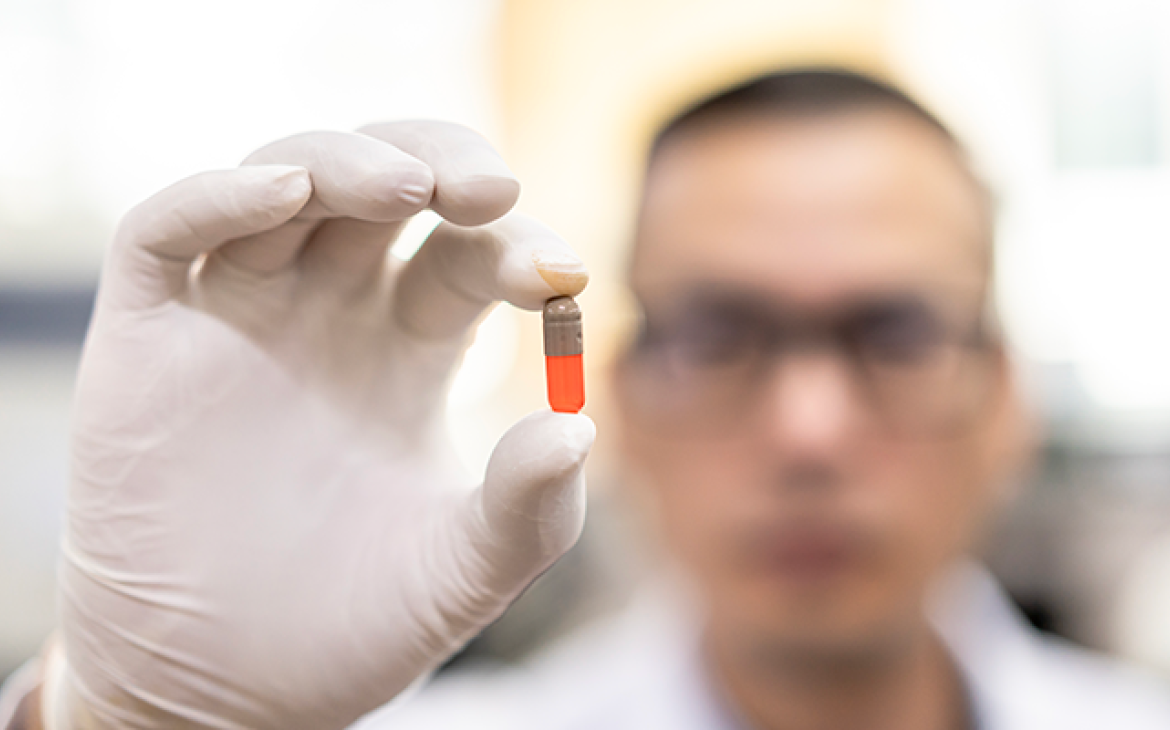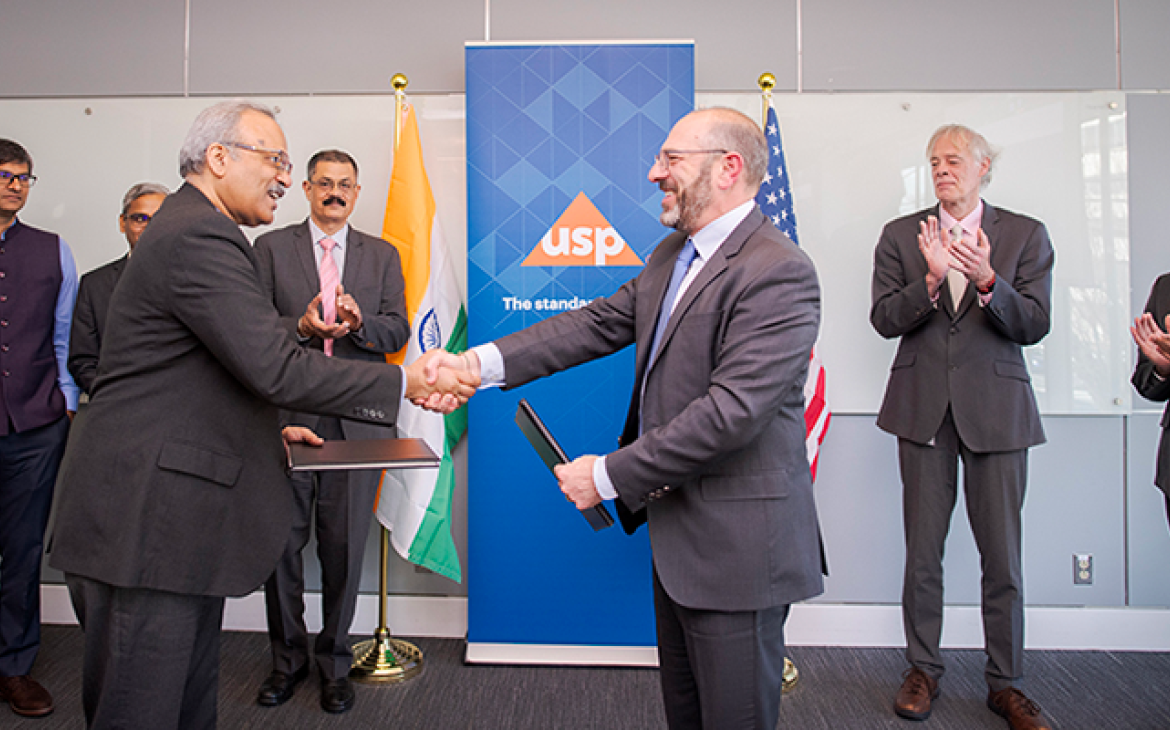
The issue of addressing potential nitrosamine impurities in medicines has been the focus at events taking place around the globe in recent months and will continue to do so throughout 2023. USP’s Mrunal Jaywant, Vice President, Research and Development, USP India-Science will take the stage at a variety of events this summer, including a workshop hosted by the U.S. FDA and Center for Research on Complex Generics, as well as at the 8th Global Pharmaceutical Quality Summit hosted by the Indian Pharmaceutical Alliance (IPA) in Mumbai – both taking place this month.
Earlier this year, USP India hosted a workshop in Hyderabad, India, conducted in collaboration with the IPA. The workshop touched on a wide range of topics – the sources of nitrosamines, analytical considerations, toxicity assessments and regulatory compliance. Quality Matters recently sat down with Jaywant to talk about insights gleaned from these events, related challenges posed by nitrosamine impurities, and what lies ahead for manufacturers, regulators and others in the industry.
Remind us why nitrosamines are a concern, and about USP’s role?
Nitrosamine impurities can potentially form in a variety of ways during the lifecycle of a drug’s development and manufacturing, and they pose cancer risks if people are exposed to them above certain levels and over prolonged periods. When such quality issues emerge, USP standards and related tools can help regulators, manufacturers and other stakeholders better understand the threat the issues pose and how to control them.
The workshop in India brought together stakeholders from industry, regulatory agencies, pharmacopeias, non-profit organizations, and academic institutions from around the globe to discuss the potential for nitrosamines in pharmaceuticals. What was the goal of convening these groups?
The potential for nitrosamine impurities has become an ever-evolving challenge in regions around the world. Periodic drug product recalls due to the detection of new nitrosamine impurities such as Nitrosamine Drug-Substance Related Impurities (NDSRIs) have complicated the issue further, giving everyone involved new and evolving challenges to keep up with. We saw a need to bring all stakeholders together and provide a platform for focused discussions on the challenges posed by NDSRIs and the probable solutions being pursued. These discussions will help regulators understand current industry needs and expectations and will help pharmaceutical companies understand how to interpret regulatory and pharmacopeial recommendations, as well as the standards and tools that are available as potential solutions to address these challenges. Other stakeholders, including pharmacopeias, researchers and academics, also benefit from participating in and learning from discussions about analytical method development challenges, evolving toxicology science, and risk assessment frameworks – among many other topics.
What concerns did you hear from attendees?
The challenges our stakeholders are experiencing are varied but certainly not unique. Immediate concerns involve the lack of availability of toxicity data and acceptable intake limits for new nitrosamines, specifically NDSRIs. Companies marketing in the U.S. and beyond are looking to the U.S. FDA to provide guidance to determine limits for NDSRIs and for availability of well-characterized reference standards. We also heard attendees voice the concern that with so many methods for addressing nitrosamines available in the public domain from a variety of sources – regulators, industry colleagues, instrument vendors and pharmacopeias – how do users decide which method to use for their application?
The challenges come down to both understanding the risks and understanding the analytical tools needed to control them.
What do you see as keys to tackling the problem posed by the potential for impurities on a global and localized scale?
Several tools for developing an appropriate control strategy for nitrosamines in pharmaceuticals exist; however, regulators from regions beyond the U.S. and Europe are often in need of both access to standards and training due to limited resources and expertise to understand how to use the tools. This includes risk assessment as well as the development and availability of lab procedures for analyzing marketed samples.
Risk assessment is the first step and must be conducted throughout the drug product life cycle -- from development stage to routine production in case of any changes (such as a change in raw material or solvent vendors) to assess the risk and impact on final product quality.
What has USP learned from stakeholders and what direction will USP take to continue to play a leadership role in the effort to understand and control for nitrosamines impurities in pharmaceuticals?
Hearing from stakeholders across the spectrum has confirmed that we are on the right path, and that opportunities for providing resources are truly limitless at this point in the evolution of this challenge.
It is important to have a robust strategy for identifying, evaluating, and minimizing the presence of impurities to ensure product safety, efficacy and quality. Stakeholders need more reference standards, including product-specific standards such as methods and limits for NDSRIs. We need more tools to identify, detect and analyze nitrosamines. There is a specific need for standards, guidance documents including monographs and analytical procedures, and reference materials for nitrosamines and precursors of nitrosamines in excipients.
Training on how to use a read-across approach and how to decide on surrogates for determining limits for new nitrosamines is crucial. USP will continue to offer solutions and support stakeholder needs to acquire skills by developing lab demonstration videos, guiding them in method development and providing clarity on requirements for toxicity studies for determining mutagenic potential through the delivery of education courses. We are also frequently looking into new potential solutions to address stakeholders’ needs based on what we are hearing from them.
The bottom line is that there is enormous appetite for more analytical procedures and more information.
Where do we go from here?
All stakeholders -- manufacturers, regulators, standard-setting organizations, instrument vendors, and others -- are facing new and unique challenges posed by NDSRIs related to unknown limits and toxicity levels. It is important to have a robust control strategy for having better control of nitrosamine impurities. Though nitrosamines are not new chemicals and were already reported in the literature, their identification in certain medicines is causing supply chain disruption that affects patients.
As a reminder, starting in 2018, the presence of nitrosamines was identified in some medicines for high blood pressure and heart failure, and they were subsequently found in other drugs. Recent recalls have put the issue back in the spotlight. USP developed solutions and tools to help users understand potential sources of these impurities, assess risk, and establish strategies to control them. These efforts dovetail with those of the U.S. FDA and other global regulatory agencies.
We must ask ourselves how we can avoid related supply chain disruptions in the future. There is an urgent need for manufacturers to develop capabilities to assess risks thoroughly, conduct in-vitro toxicity studies, apply in-silico tools, justify limits, and define their control strategy. Manufacturers should also change their approach from reactive to proactive by using more predictive tools. USP is facilitating these discussions through the Nitrosamines Exchange, our free, online membership-based community hub, to help stakeholders share knowledge with one another and get to solutions faster than any of us would alone. USP is also introducing new tools and innovative approaches -- such as video tutorials of lab demonstrations, the new Analytical Hub within the online Nitrosamines Exchange, and Pharmaceutical Analytical Impurities to supply additional nitrosamine reference materials -- to help our stakeholders address these challenges.
Thank you, Mrunal


